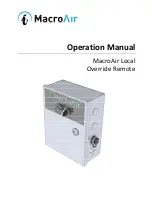
4 - EN
4. Summary and
principle
The fan is part of a mechanical ventilation
system and is designed for the extraction
of stale indoor air. It can either be used as
a roof extract fan with free-flow suction or
it can be connected to ventilation ducts.
The fan can be operated with a 3-position
switch. The direct current version also
with radio control (RF) or analog control
(0-10V). If the RF range is not sufficient it
can be increased by an RF repeater. The
fan can also be equipped with a non-po-
wered extractor hood, positioned above
the cooker. Correct use of these settings
will ensure optimal extraction of cooking
smells and moisture through the central
system. The system has been designed to
be in operation 24 hours a day. For ener-
gy saving purposes, a low-current electric
motor has been fitted.
4.1 Information for the fitter
The fan is constructed of aluminium
piping and a plastic casing. This casing
is made up of a cowling, fixed blades, a
motor plate, and a lid, and also includes
an air cap, electrical control system and
identification plate.
4.2 Electrical dangers
There is a risk of electric shock during in-
stallation or maintenance. Acquaint your-
self with the following safety measures
prior to commencing installation or
maintenance:
■
Always disconnect the power first or
remove the plug from the connection
box prior to carrying out maintenance
on the fan;
■
Only reconnect electrical power or re-
insert the plug in the connection box
when the fan has been fitted and the
cover fitted.
4.3 Electrostatic discharge
(ESD)
There is a risk that printed circuits (PCBs)
with components might be damaged by
an electrostatic discharge when being
exchanged. For this reason, always take
ESD-inhibiting measures when dealing
with PCBs, such as wearing an antistatic
wristband.
4.4 Mechanical dangers
There is a risk of injury from moving parts
during installation or maintenance. So ne-
ver open the fan or uncouple hoses while
the fan is in operation.
4.5. Safety provisions and
measures
■
The fan cannot be opened without
using tools;
■
It should not be possible to touch the
fans, therefore ducting must be con-
nected to the fan at a minimum duct
length of 900mm.
5.. Fitting RPM(e)
The RPM(e) pipe fan is designed to be
fitted to a roof and connected directly to
ventilation ducts. An adhesive plate can
be used when the roof passage has to
pass through a flat roof. For sloping roofs,
















































